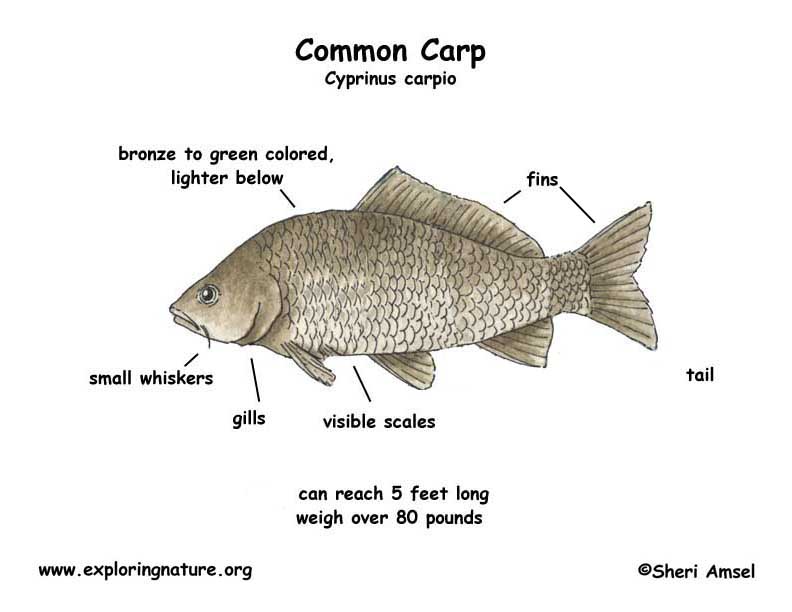

They are found from central canada, throughout the U.S. and south into central Mexico. They are considered one of the common fish species in North America.
They live in slow moving water, marshes or large ponds and lakes with mucky bottoms. They do well in fresh water or brackish water (slightly salty).
They keep growing throughout their lives. They can reach 5 feet long and weigh over 80 pounds. They can be bronze to green colored, lighter below. They have very visible scales and small whiskers.
They like to travel in schools.
They eat water plants mostly, but also insects, crustaceans, mollusks, fish eggs and any dead matter that they find.
A female lays as many as 300,000 eggs in shallow water and the male fertilizes them. Most are eaten by other fish.
Kingdom: Animalia
Phylum: Chordata
Subphylum: Vertebrata
Class: Actinopterygii
Order: Cypriniformes
Suborder: None
Family: Cyprinidae
Genus: Cyprinus
Species: C. carpio
When you research information you must cite the reference. Citing for websites is different from citing from books, magazines and periodicals. The style of citing shown here is from the MLA Style Citations (Modern Language Association).
When citing a WEBSITE the general format is as follows.
Author Last Name, First Name(s). "Title: Subtitle of Part of Web Page, if appropriate." Title: Subtitle: Section of Page if appropriate. Sponsoring/Publishing Agency, If Given. Additional significant descriptive information. Date of Electronic Publication or other Date, such as Last Updated. Day Month Year of access < URL >.
Amsel, Sheri. "Carp (Common)" Exploring Nature Educational Resource ©2005-2024. December 15, 2024
< http://www.exploringnature.org/db/view/595 >

